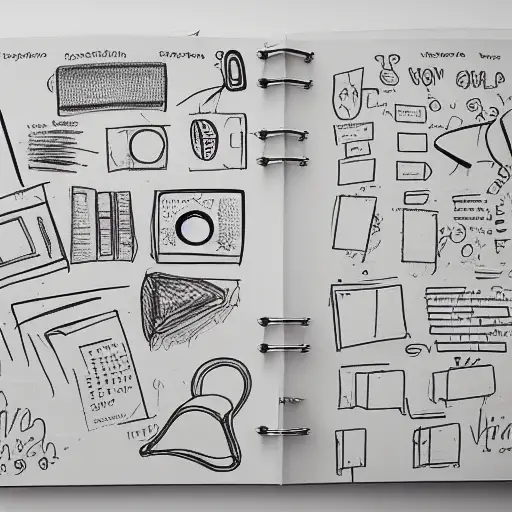Keeping your files organized will save you time and boost your productivity. Files that are clearly labeled and categorized will be much easier to find. This is especially true if you’re working from your computer and leave it open. It is also much easier to find a file when you need it, even when you move workstations.
Organizational structure is key to keeping your files organized
The key to keeping your files organized is to keep them in a logical hierarchy. This means separating files by category and by project, rather than by user. In a business environment, this can be useful for a variety of reasons. For example, if you have five people working on a project, you don’t want them to have to search through five different folders to find what they need.
When using a file system like Dropbox, naming your files is especially important. It can be hard to remember everything associated with a particular project if you don’t have a consistent naming convention. For example, if you’re working with ad agencies, you can include the client’s name and industry in file names to make it easier to find the information you’re looking for. By following an organized system, you’ll be able to find the files you need without too much hassle.
In a business, you may want to keep dated or time-stamped documents organized by date or by type. This is useful for tracking decisions and activities within an organization. You should sort time-stamped documents in chronological order, from oldest to newest. You may also want to organize undated documents by frequency of use or importance. You can also alphabetize your files by major categories or by client names.
Having an organized system also allows you to reduce the amount of paperwork you store. You can also recycle documents that are no longer relevant, as long as you keep a small recycling bin or a dedicated basket near your desk. Disposing of documents on a regular basis helps keep your workspace clean and prevents piles from building up, which can lead to fire or trip hazards.
One of the easiest ways to keep your files organized is to use a folder system. This is similar to a filing cabinet, and can help you sort your files into categories. For example, your invoices folder might contain folders named “2018”, “2017”, and “2016.” You could also have a folder for client data, customer data, and correspondence. Keep in mind that a folder system should make your files more organized and easy to find.
Creating nested folders helps classify your files
If you have a lot of files, creating nested folders may be an excellent solution. Using subfolders to categorize your files can be convenient, but it may also cause problems with your workflow. The best folder structure is one that resembles the way you work.
Folder structure is an art. Plan the structure of all your folders before creating them. This will prevent confusion and save time. It will also result in a neat and tidy folder structure. It is important to keep the folders to a few levels, as more levels can make things more difficult.
Create different folders for different phases of a project. For example, create separate folders for work in progress, one for completed work, and one for archived files. Using these different levels can help you locate the files you need and make it clear to colleagues where they should store new assets.
Another great method is to create a template for folder structure. This will help you create folders automatically. To save time, you can create templates for folders that are used again. These templates can be copied over whenever you need to create a new folder.
When you create subfolders, make sure that each one has a unique home for your files. This way, you’ll avoid the risk of creating duplicate files. Another great way to avoid duplicate files is to create shortcuts to your files. Shortcuts are helpful because they allow you to move files to different locations without affecting the original file.
Labeling documents helps you find what you need
Labeling documents before putting them in a binder can make it easier to find what you need later. For example, you can use colored tabs to make it easier to find different types of documents. You can also use color-coded keys to keep track of different categories of documents.
Labeling documents by category makes it easier to find what you need when you need it. Some folders have labels built in, but if not, you can use colored pens or highlighters on black text. You can also use a label maker to print single labels. These are particularly useful for labeling cabinets and filing shelves. They can replace existing labels as well.
Labeling documents can also help you get your things back in order. When you are keeping your files organized, you will not have to spend hours looking for items. Instead, you will be able to find what you need quickly. Even better, labels help you stay organized and cut down on your time spent sorting things.
Backing up your files
If you want to ensure that you have a complete backup of your files, you should inventory all the data you store on your computer. For example, if you’re a Windows PC user, your documents and spreadsheets will be stored in the Documents folder. Likewise, if you use any other applications, they will probably have their own folders and should be backed up. In addition, you should back up your multimedia files.
A good rule of thumb is to backup your files every two weeks. However, if you back up every day, you’ll be wasting time and effort. To determine the ideal backup frequency, perform a simple calculation. For each one-hour backup, you’ll need about 15 minutes of human effort. However, computational processing may take longer. Therefore, if you need N backups per year, you’ll need to invest N/4 hours.
Backing up your files is essential if you want to keep them organized and searchable. This will make it easier to research your writing and secure your writing. Kate Sullivan is a professional editor with experience in all facets of the publishing industry. She has edited millions of words and helped bestselling authors build their careers.
Another way to organize your files is by using cloud-based file store and sync services. While these services may not automatically backup newly created files, they will synchronize updates to your existing files. The most popular file sync services include Dropbox and Box, which let you retain previous versions of updated files.
Another good practice is using an archive folder to store files that you no longer need to access regularly. A proper archive is a folder created specifically for this purpose, and is separated from your main drive. This allows you to save money on storage space and make use of cheaper, slower storage options. You can also view the history of the files in the archive.
If you don’t have an external hard drive, you can try cloud storage services like Google Drive, which provides you with unlimited space for only $100 a year. However, there are some disadvantages to Google Drive, such as its lack of integration with Microsoft Office. If you’re used to Office, you’ll find it difficult to switch.











